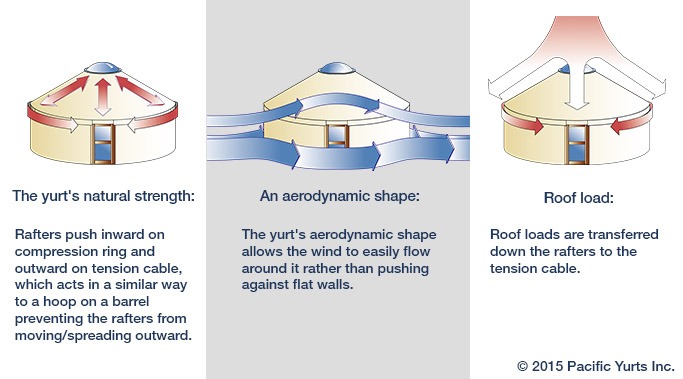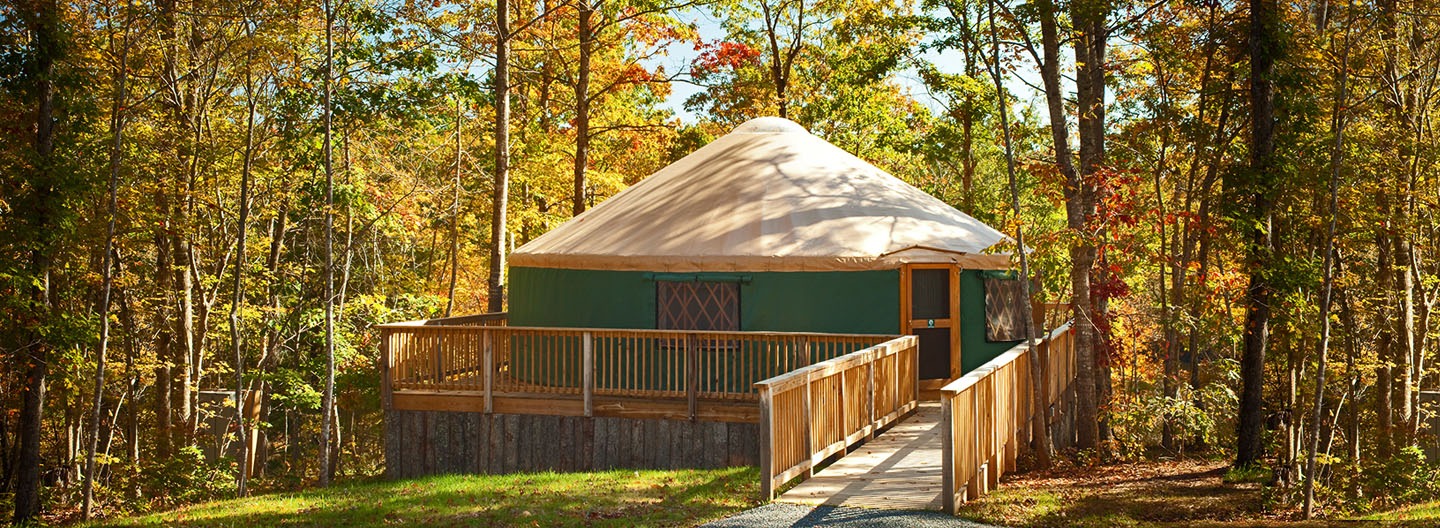What is a Yurt?
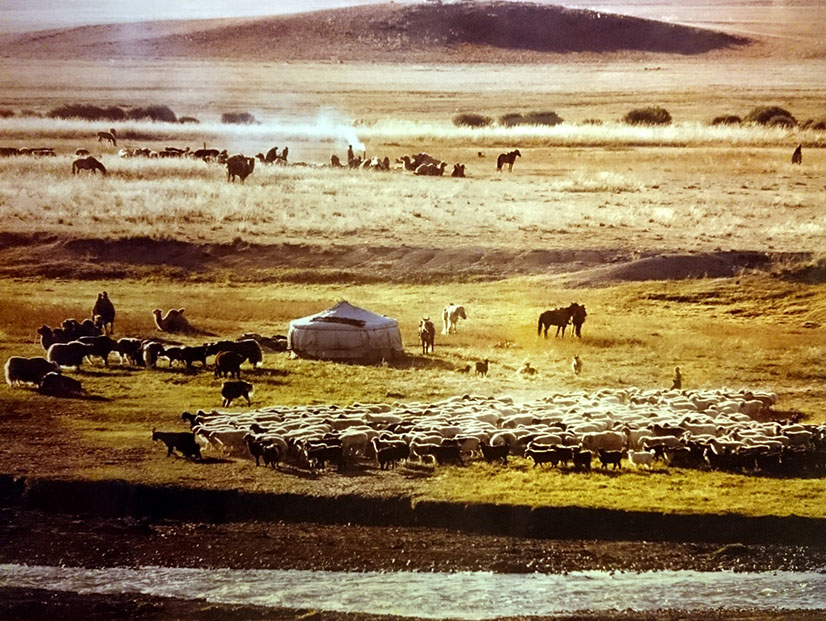
An ancient shelter
Once described as “an architectural wonder” by Architectural Digest, the traditional nomadic home of Mongolia and surrounding regions, typically referred to as a Ger, has been widely used for thousands of years. Key factors in defining a yurt are that it is portable, circular, has an accordion lattice wall, a tension band, radial rafters leading up to a central compression ring and is covered in felt or fabric. Our respect for the ingenious, practical design of this amazing structure inspired us to establish the first modern yurt company.
There are several variations of the basic design and different names used for the structure. Of these variations there are two main types, the Ger and the bentwood yurt (also known as the Üy). The Mongolian Ger is the older design, which has a relatively heavy center ring (known as the crown or tono) and straight rafters (known as uni) spanning from the center ring to the lattice wall (known as the khana). This is the design that the modern Pacific Yurt was inspired by and patterned after.
A modern adaptation
The Pacific Yurt is an adaptation of the beloved shelter used by Central Asian nomads for centuries. The compact shape of the yurt and combination of lightweight members in tension and compression mean that the structure is highly efficient in maximizing strength while minimizing the use of materials.
Our state-of-the-art version retains the sense of wholeness of the ancient form while delivering the structural integrity, longevity and low maintenance demanded by modern users.
Connecting the ancient wisdom of the traditional design with modern technology, we believe that this structure can be highly beneficial in providing practical, sustainable and eco-friendly solutions for a variety of modern uses.
Typically set upon wood platforms supported by simple post-and-beam systems, our yurts can provide unique, year-round comfort in many applications – from backyard studios to fully furnished vacation retreats. This allows more people to enjoy the natural environment while ensuring a minimal impact on the earth.
“There aren’t many places where you can sleep this comfortably and still see the stars.”– James H., Wyoming
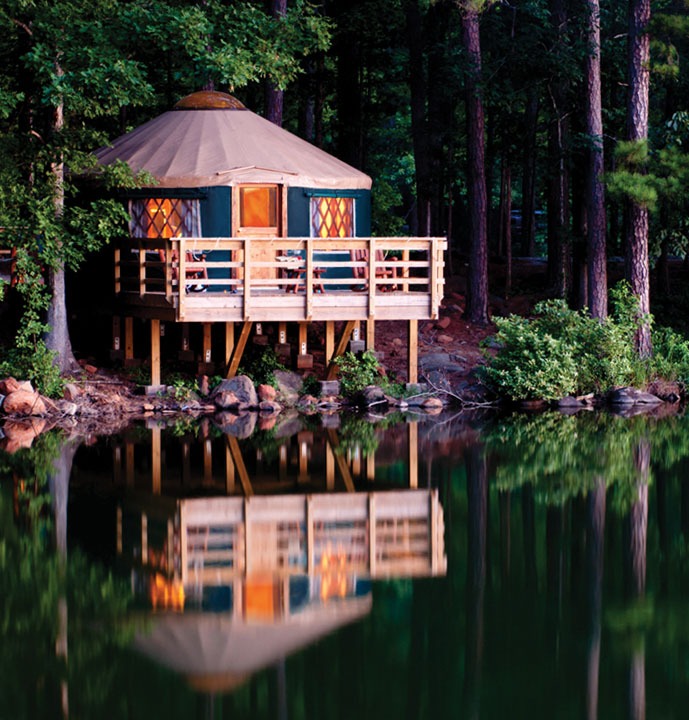
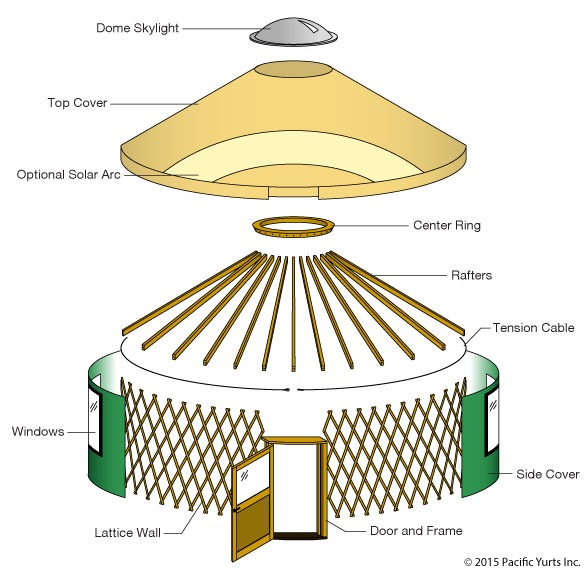
State-of-the-art design
Pacific Yurts has redesigned the traditional structure using modern materials and technology. The woven tension band is replaced with an air-craft quality tension cable and skinned willow pole rafters have been replaced by stress-rated, kiln-dried dimensional Douglas fir. The felt and animal skin coverings have been substituted with architectural grade fabrics that include welded seams that are impervious to moisture. These fabrics have proven adaptable to a much wider range of climates and conditions. NASA-developed reflective insulation replaces layers of felted wool.
An acrylic skylight allows light and warmth during the day and a clear view of the sky at night. Advanced hardware, ADA compliant doors and a wide range of innovative custom features have added performance, strength and beauty to the already impressive design of the yurt.
“It is an ingenious design, fun to put up and a very beautiful and aesthetically pleasing space.”– Laurel H., California
Natural strength
The compact shape of the yurt and the combination of lightweight members in tension and compression mean that the structure is highly efficient in maximizing strength while minimizing material.
These illustrations showcase the yurt’s natural strength, aerodynamic shape and roof load.
As the original manufacturer of the modern yurt, we have since 1978 shipped our yurts all over the world, where their strength and durability have been proven in an array of personal, business and government applications.
